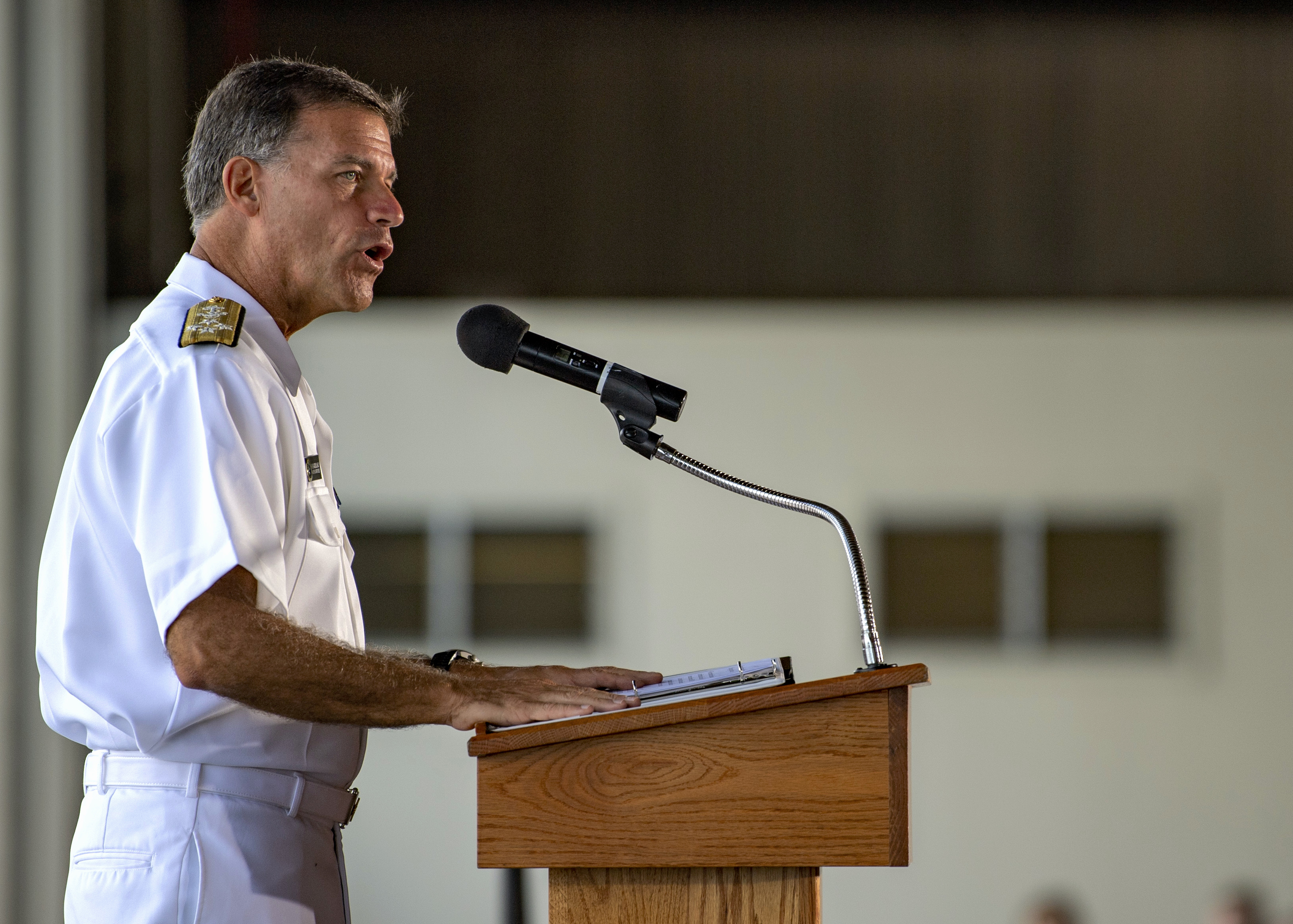This year’s Rim of the Pacific 2020 international naval exercise be more complex and challenging than in years past, U.S. Pacific Fleet Commander Adm. John Aquilino told reporters on Friday.
“RIMPAC is currently in final planning with the final planning conference, I believe, occurs next month in Hawaii. I think the latest count is 26 nations, maybe more than that participating,” said Aquilino speaking in a conference call on March 6. “The operations and events in this year’s exercise will be in alignment with 2018’s iteration and that the exercise would welcome new partners to take leadership roles in the exercise.”
He declined to specify which nations were taking part. “I won’t comment on which nations are leading which events, but I can tell you that the events become more complex, they become more challenging and that is based on the requests of all those partner nations,” he said.
The 2018 RIMPAC exercise involved 25 nations including Australia, Brunei, Canada, Chile, Colombia, France, Germany, India, Indonesia, Israel, Japan, Malaysia, Mexico, Netherlands, New Zealand, Peru, Republic of Korea, Philippines, Singapore, Sri Lanka, Thailand, Tonga, United Kingdom, United States and Vietnam.
China was disinvited from participating in the 2018 exercise, and it is unlikely China will participate in the 2020 exercise. Taiwan has expressed interest in participating in the exercise but has not officially stated it will make its RIMPAC debut. RIMPAC includes non-Asia Pacific countries and the exercise involves air, special forces and ground forces.
- HMCS Regina dons new 'dazzle' paint ahead of RIMPAC 2020 exercise
- New Zealand Defence Force at RimPac...
Regarding coronavirus precautions, Aquilino said the U.S. Navy was ensuring the following three things: U.S. sailors and their families remain healthy and that the Navy supports them in every way possible; all measures are taken to limit the ability of the U.S. Navy to transmit the disease, either back to the U.S. homeland or any of its allies, partners and friends in the region; the Navy’s warfighting readiness is maintained.
“So we have executed procedures to do all of those and every event that is scheduled or planned is reviewed on a case by case basis through those lenses to ensure we achieve those objectives,” said Aquilino.
Daniel Kritenbrink, the U.S. Ambassador to Vietnam, joined Aquilino on the conference call to discuss the March 5 port visit to Da Nang, Vietnam by the carrier USS Theodore Roosevelt (CVN-71) and cruiser USS Bunker Hill (CG-52). The visit commemorated 25 years of U.S.-Vietnam diplomatic relations. Theodore Roosevelt’s visit to Vietnam mark’s the second time a U.S. Navy aircraft carrier has visited the nation since the end of the Vietnam War. In 2018, USS Carl Vinson (CVN-70) visited Da Nang. U.S. destroyers began making port calls in Vietnam in 2004.
Both Aquilino and Kritenbrink stressed the U.S. partnership and relationship with Vietnam, “The United States stands by Vietnam, as it upholds it sovereignty and independence while it exercises legitimate claims in accordance with international law” Aquilino said. Kritenbrink said, “Our defense relationship promotes shared security interests including freedom of navigation in the East Sea, respect for international law and peaceful resolution of disputes.”




